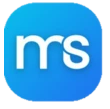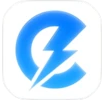Introduction
The macOS operating system has long been celebrated for its elegant design and user-friendly interface, yet certain aspects of the user experience remain ripe for innovation. Volume control represents one such area where functionality could benefit from enhanced visual appeal and improved accessibility. Volume Glass emerges as a revolutionary solution that transforms the traditional Mac volume control system by introducing iOS-style elegance and modern design principles to desktop computing.
Developed as an open-source project, Volume Glass represents a fresh approach to managing audio levels on macOS systems. This free application brings the intuitive, visually stunning volume controls familiar to iPhone and iPad users directly to Mac computers, creating a seamless experience across Apple's ecosystem. By combining aesthetic excellence with practical functionality, Volume Glass demonstrates how thoughtful interface design can significantly enhance daily computing interactions.
The Vision Behind Volume Glass
The creation of Volume Glass stems from a desire to bridge the design language gap between iOS and macOS. While Apple's mobile operating system features sleek, modern volume indicators that appear seamlessly over content, the traditional Mac volume interface has remained relatively unchanged for years. Developer Aarush recognized this opportunity for improvement and set out to create an application that would bring contemporary design aesthetics to Mac volume control.
As a second major macOS project from its creator, Volume Glass reflects a commitment to enhancing user experience through open-source development. The decision to make the application freely available and completely open-source demonstrates a philosophy of community-driven improvement and accessibility. This approach allows users worldwide to benefit from advanced volume control features without financial barriers while enabling developers to contribute improvements and modifications to the codebase.
Stunning Glass Design Architecture
The signature feature of Volume Glass is its beautiful glass design that sets a new standard for volume control aesthetics on macOS. The interface employs translucent elements, elegant animations, and refined visual effects that create a premium, modern appearance. This glass-inspired design philosophy aligns perfectly with contemporary interface trends while maintaining excellent readability and usability.
The visual implementation within Volume Glass leverages macOS design capabilities to create depth and dimensionality in the volume control interface. The translucent glass effect allows the control to blend harmoniously with any desktop background or active application, ensuring it never feels intrusive or out of place. This thoughtful design consideration means that Volume Glass enhances rather than disrupts the visual continuity of the user's workspace.
The attention to detail in Volume Glass extends to every visual element, from smooth fade transitions to precise color gradations that give the interface its characteristic glass appearance. These carefully crafted design elements combine to create a volume control experience that feels both luxurious and functional, elevating a routine interaction into something genuinely enjoyable.
Innovative Hover-to-Reveal Functionality
One of the most practical features within Volume Glass is its hover-to-reveal volume bar mechanism. This intelligent approach keeps the interface hidden during normal use, preventing screen clutter and preserving valuable display space. When users need to adjust volume levels, simply hovering the cursor over the designated area causes the volume control to appear smoothly and immediately.
This hover-based interaction model offers significant advantages over traditional always-visible or keyboard-triggered volume displays. Volume Glass remains accessible at all times without occupying permanent screen real estate, striking an ideal balance between availability and discretion. The hover activation responds instantaneously, ensuring that volume adjustments remain quick and convenient even though the interface stays hidden by default.
The implementation of hover functionality within Volume Glass demonstrates sophisticated user experience design. The activation area is sized appropriately to prevent accidental triggering while remaining easy to locate intentionally. The smooth appearance and disappearance animations ensure that the transition feels natural and polished, contributing to the overall premium feel of the application.
Comprehensive Quick Actions Panel
Beyond basic volume adjustment, Volume Glass includes a quick actions panel that expands the application's utility significantly. This panel provides convenient access to common audio-related functions and settings, consolidating controls that would typically require navigating through system preferences or menu bars. The quick actions integration transforms Volume Glass from a simple volume slider into a comprehensive audio management hub.
The quick actions panel within Volume Glass is designed for efficiency, presenting frequently used controls in an easily accessible format. Users can manage various audio settings without interrupting their workflow or switching away from active applications. This streamlined approach to audio management saves time and reduces the friction associated with common audio control tasks.
The customization options within the quick actions panel allow users to tailor Volume Glass to their specific needs and preferences. This flexibility ensures that the most relevant controls remain readily available while less frequently used options stay conveniently accessible when needed. The thoughtful organization of quick actions reflects a deep understanding of how users interact with audio controls in practical scenarios.
Flexible Positioning Options
Recognizing that different users have varying preferences for interface placement, Volume Glass offers five distinct positioning options for the volume control. This flexibility allows each user to place the control in the location that best suits their workflow, screen layout, and personal preferences. Whether preferring corner placement, edge alignment, or centered positioning, Volume Glass accommodates individual needs.
The five positioning options provided by Volume Glass cover the most common user preferences while avoiding overwhelming complexity. Each position is carefully designed to remain accessible without interfering with typical application layouts or system interface elements. Users can experiment with different placements to discover which location feels most natural for their specific usage patterns.
The positioning flexibility within Volume Glass proves particularly valuable for users with multiple monitors or non-standard display configurations. The ability to choose control placement ensures that Volume Glass works effectively regardless of display arrangement, resolution, or workspace organization. This adaptability makes the application suitable for diverse computing environments and user preferences.
Robust External Monitor Support
In today's multi-display computing environments, proper external monitor support is essential for any system-level utility. Volume Glass includes comprehensive support for external monitors, ensuring consistent functionality across all connected displays. This capability allows users to manage audio levels seamlessly whether working on a MacBook's built-in display, an external monitor, or multiple screens simultaneously.
The external monitor support within Volume Glass extends beyond simple detection to include intelligent positioning and display-aware functionality. The application adapts to different screen resolutions, aspect ratios, and arrangements, maintaining optimal usability regardless of display configuration. This sophisticated multi-monitor handling ensures that Volume Glass feels native and natural across all screens.
For users who frequently connect and disconnect external displays, Volume Glass handles these transitions gracefully. The application automatically adjusts to display configuration changes, ensuring that volume controls remain accessible and properly positioned after monitor connections or disconnections. This reliability makes Volume Glass an excellent choice for mobile professionals who alternate between different workspaces.
Powerful Keyboard Shortcut Integration
Understanding that many users prefer keyboard-driven workflows, Volume Glass incorporates comprehensive keyboard shortcut support. This feature enables rapid volume adjustments without requiring mouse interaction, significantly accelerating audio control operations. The keyboard shortcuts integrate seamlessly with existing macOS key bindings, avoiding conflicts while providing intuitive control options.
The keyboard shortcut functionality within Volume Glass offers customization options that allow users to define their preferred key combinations. This flexibility ensures that Volume Glass adapts to individual workflow preferences rather than imposing a fixed control scheme. Users can configure shortcuts that feel natural within their existing keyboard usage patterns, minimizing the learning curve.
The combination of visual controls and keyboard shortcuts within Volume Glass provides the best of both worlds. Users can choose their preferred interaction method based on current context, switching effortlessly between mouse-based and keyboard-based control. This flexibility makes Volume Glass suitable for diverse usage scenarios and personal preferences.
Native Swift Architecture and Performance
The technical foundation of Volume Glass is built on native Swift code, leveraging Apple's modern programming language to deliver optimal performance and system integration. This native architecture ensures that Volume Glass operates efficiently, responds instantly to user input, and integrates seamlessly with macOS system services. The Swift implementation contributes to the application's exceptional lightweight footprint.
At only 10 megabytes, Volume Glass exemplifies efficient software design. This minimal size means the application downloads quickly, installs instantly, and consumes negligible storage space. Despite its small footprint, Volume Glass delivers full-featured functionality and sophisticated visual effects, demonstrating that excellent software need not be bloated or resource-intensive.
The native Swift architecture of Volume Glass provides additional benefits beyond size efficiency. The application launches instantly, responds to user interactions without delay, and operates smoothly even on older Mac hardware. This performance optimization ensures that Volume Glass enhances rather than hinders system responsiveness, maintaining the snappy user experience that Mac users expect.
Open Source Philosophy and Community Development
The open-source nature of Volume Glass represents a fundamental commitment to transparency, collaboration, and community-driven improvement. By making the complete source code publicly available on GitHub, the project invites developers worldwide to examine, learn from, and contribute to the codebase. This openness fosters trust, enables customization, and accelerates feature development through community participation.
The open-source model adopted by Volume Glass provides numerous advantages for users and developers alike. Users benefit from transparency regarding application functionality, security, and data handling practices. Developers gain access to well-structured Swift code that demonstrates best practices for macOS application development, serving as an educational resource while enabling custom modifications.
Community contributions have the potential to expand Volume Glass capabilities significantly over time. The open development model welcomes feature suggestions, bug reports, and code contributions from users who want to improve the application. This collaborative approach ensures that Volume Glass continues evolving to meet user needs while maintaining its core design philosophy.
Extensive Language Support and Accessibility
Volume Glass demonstrates a commitment to global accessibility through support for 48 languages, including English and 47 additional languages. This extensive localization ensures that users worldwide can interact with the application in their native language, removing linguistic barriers to adoption. The comprehensive language support reflects a user-centered design philosophy that prioritizes inclusivity.
The multilingual implementation within Volume Glass goes beyond simple text translation to include culturally appropriate interface adaptations where relevant. This thoughtful localization approach ensures that the application feels native and natural to users regardless of their linguistic background. The extensive language support makes Volume Glass suitable for international organizations and multilingual users.
Technical Specifications and System Requirements
Version 1.3.0 of Volume Glass represents the latest stable release, incorporating refinements and enhancements based on user feedback and ongoing development. The application runs on macOS systems, supporting recent operating system versions while maintaining compatibility with older releases where possible. This broad compatibility ensures that most Mac users can enjoy the benefits of Volume Glass regardless of their current system version.
The installation process for Volume Glass is straightforward, following standard macOS application installation procedures. Users can download the application, move it to their Applications folder, and launch it immediately without complex configuration or setup procedures. The intuitive initial setup guides users through basic preferences, ensuring optimal functionality from first use.
Practical Applications and Use Cases
Volume Glass serves diverse user groups across various contexts. Creative professionals working with audio and video benefit from quick, precise volume control that doesn't interrupt creative workflows. The elegant interface complements the aesthetic standards of creative applications while providing practical functionality that enhances productivity.
Students and remote workers find Volume Glass valuable for managing audio during video conferences, online learning sessions, and multimedia content consumption. The quick actions panel and keyboard shortcuts enable rapid audio adjustments without disrupting meetings or presentations. The hover-to-reveal functionality keeps the interface hidden during screen sharing while remaining instantly accessible when needed.
Conclusion
Volume Glass establishes itself as an essential utility for Mac users seeking to enhance their audio control experience with iOS-style elegance and modern design principles. Through its stunning glass interface, innovative hover-to-reveal functionality, comprehensive quick actions panel, flexible positioning options, and robust external monitor support, the application addresses practical needs while delivering visual excellence. The native Swift architecture ensures lightweight, responsive performance that respects system resources while providing sophisticated functionality.
The open-source nature and free availability of Volume Glass make it accessible to all Mac users, regardless of budget constraints. The extensive language support and thoughtful design considerations reflect a commitment to inclusivity and user-centered development. For Mac users who appreciate refined interface design and seek improved volume control functionality, Volume Glass represents an outstanding solution that brings iOS-style polish to desktop computing. Whether you're a creative professional, student, remote worker, or casual user, Volume Glass transforms a routine interaction into an elegant, efficient experience that exemplifies the best of modern macOS application development.








